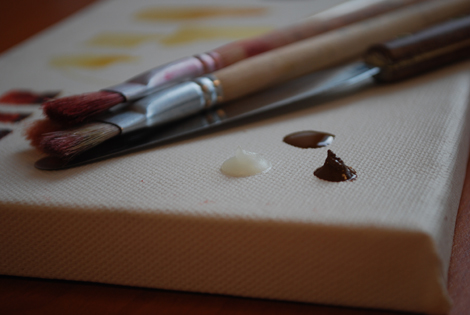19th Century Painters' Trick Revealed
FRIDAY, JANUARY 13, 2017
Oil painters of the 19th Century relied on innovative gel mixtures called “gumtions” to produce works of art with exceptional texture and volume in record time.

 |
| © Hélène Pasco, LAMS (CNRS, UPMC) |
|
On canvas, the consistency of gels and gel-paint mixtures differs greatly from that of paint alone, which spreads without retaining volume. |
Researchers in France report they have uncovered the chemical secrets behind these concoctions. And lead, they say, in its acetate form, is the key.
Dry in Days
Drying times for early oil paints—made by grinding pigments with linseed, walnut or poppy seed oil—were remarkably long. Completing a painting might take an artist months or even years if several layers were involved.
In the 19th Century, however, British painter J.M.W. Turner and others produced oil-resin gels containing lead acetate that combined with oil paints. These buttery gumtions caused a dramatic decrease in dry times, the scientists report.
The mixtures also made it possible to finish a painting in just days while “incorporating unrivaled volume and textured effects” to boot, the researchers note.
How it Worked?
The scientists report that the lead in the formulation generated “a highly reactive form of oxygen that reacted with oils speeding up the drying time,” Science Mag explains.
Further, the lead catalyzed the formation of an elastic organic-inorganic gel that holds pigments in place with additional paint layers are added.
Understanding the structural, chemical and other properties of these mixtures is important in conservation efforts, the researchers report.
The team reported its findings in a recent issue of the journal Angewandte Chemie International Edition.
Tagged categories: Artists; Coating chemistry; Decorative Finishes; Painters; Research and development









